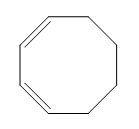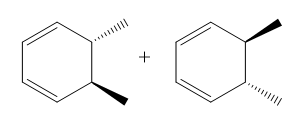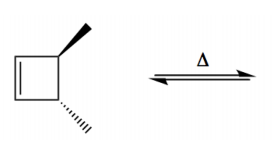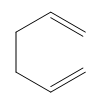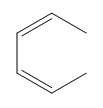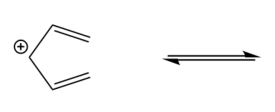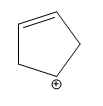In this video, we're going to put it all together and talk cumulatively about both thermal and photochemical electrocyclic reactions. So guys, the reason I put this page together is because, firstly, I wanted to just give you an overview of what the expectations are for determining stereochemistry with thermal and photochemical reactions, electrocyclic reactions, but also I kept thinking to myself like there's got to be an easier way, maybe I can come up with a cheat sheet that will help my students come up with these conclusions a little faster than having to draw the MO's from scratch every time. So what I've done here is I'm going to present this cheat sheet to you and it's going to be up to you to figure out how helpful it is or not. If you think that you're going to be doing lots of electrocyclic reactions this semester, it might be a good idea to learn this sheet. If you think that it's just a very small thing that you need to learn how to do and it's not a huge focus for your class, then maybe you just stick to the old method of what we're already doing because you know that that works every time.
So let's go ahead and just go through the steps. So the first thing you always need to do is figure out the rotation, whether it's going to be conrotatory or disrotatory. We have already gone through the process of figuring this out manually, which means that you obtain the HOMO through a combination of drawing your molecular orbitals and then the activation type, either heat or light, and then you can figure out how they rotate. So that's already what you're used to doing and that's perfectly acceptable. You can do that every time if you want, but I have a shortcut, and that shortcut is to use this little summary chart. This summary chart tells you the rotation, the conclusion of the rotation based on how many pi bonds you're starting and the type of activation that you have. For example, if you happen to have an even number of pi bonds in your polyene and if you're using thermal activation, heat activation, then you can just automatically memorize that it's going to be conrotatory. And as the factors change, the conclusion changes.
Now memorizing this whole table I think would be really just dumb. I don't think that it's a good thing to do because I think that you are going to mess up and forget it, but I do have a little abbreviation that might help that I thought of called 'etcetera'. So, you know how you say etcetera etcetera. E T C is etcetera. So you could think that if you have an even number of pi bonds with thermal activation, it's going to be conrotatory and that's 'etcetera'. And then if any of the other things change, then you can just base what your knowledge off of it 'etcetera'. So for example, let's say that instead of an even number it's an odd number, but I still have thermal activation. Well, I would think okay 'etcetera', odd number, thermal activation, then that must be disrotatory because I'm changing one thing. If you're changing two things at the same time, then it goes back to conrotatory. So if it turns out to be odd and photochemical, then I would say well that's both of them are opposite, so must be back to conrotatory. Okay, so just it's up to you to figure out if you want to use this or not. I am going to make you practice it one time, but after that, if you never want to do it again, that's fine.
Now let's say that you figured out conrotatory versus disrotatory depending on which one you used. Depending, regardless of the method, you know it. Now step 2 is to determine the stereochemistry. So the way you determine the stereochemistry is first of all, just draw the structure in 3D and draw out the rotation and then figure out if they should be going cis or trans to each other. So that's what we've already done, perfectly acceptable way to do things. You can totally do that every time if you want, but I made another chart for this step as well in case it can help you, and maybe it does, maybe it doesn't. It really you should determine based on how many of these you're going to have to do this semester. And what this one says is that it also gives you the conclusion of whether it's going to be cis or trans based on the rotation, which you should have figured out in step 1, and then based on one new idea, which is the pi bonds either being the same or different. Now what I mean by same or different is that same means that they're both either cis or they're both trans. Different means that one is cis and one is trans, right? And again, the conclusion of cis or trans is going to change based on if you change one of those things. So once again I don't think you should memorize this whole chart because then you're going to have too many things going on in your head, but you could memorize this one really stupid phrase that I thought of, which is: if it's the same dis is sis, kind of like dis instead of this. I'm just pulling out a little bit of my slang here, and if it's the same dis, disrotatory is cis. So you could think about it and you could say okay, if I already know it's going to be disrotatory and my bonds are cis, are both cis, then I know it's going to be a cis or if they're both trans, they're still going to be cis because they're the same. But if they're different or if it's conrotatory, then you just think it's the other one.
Okay, so basically for both of those, you have kind of a starting point and then you can change your answer based on how many of the variables are changing. Okay, so guys I don't know if this will be helpful or not, but at least I wanted to try to help you guys and if you just decide to use the old method, that's totally fine. Let's move on to a practice problem.




